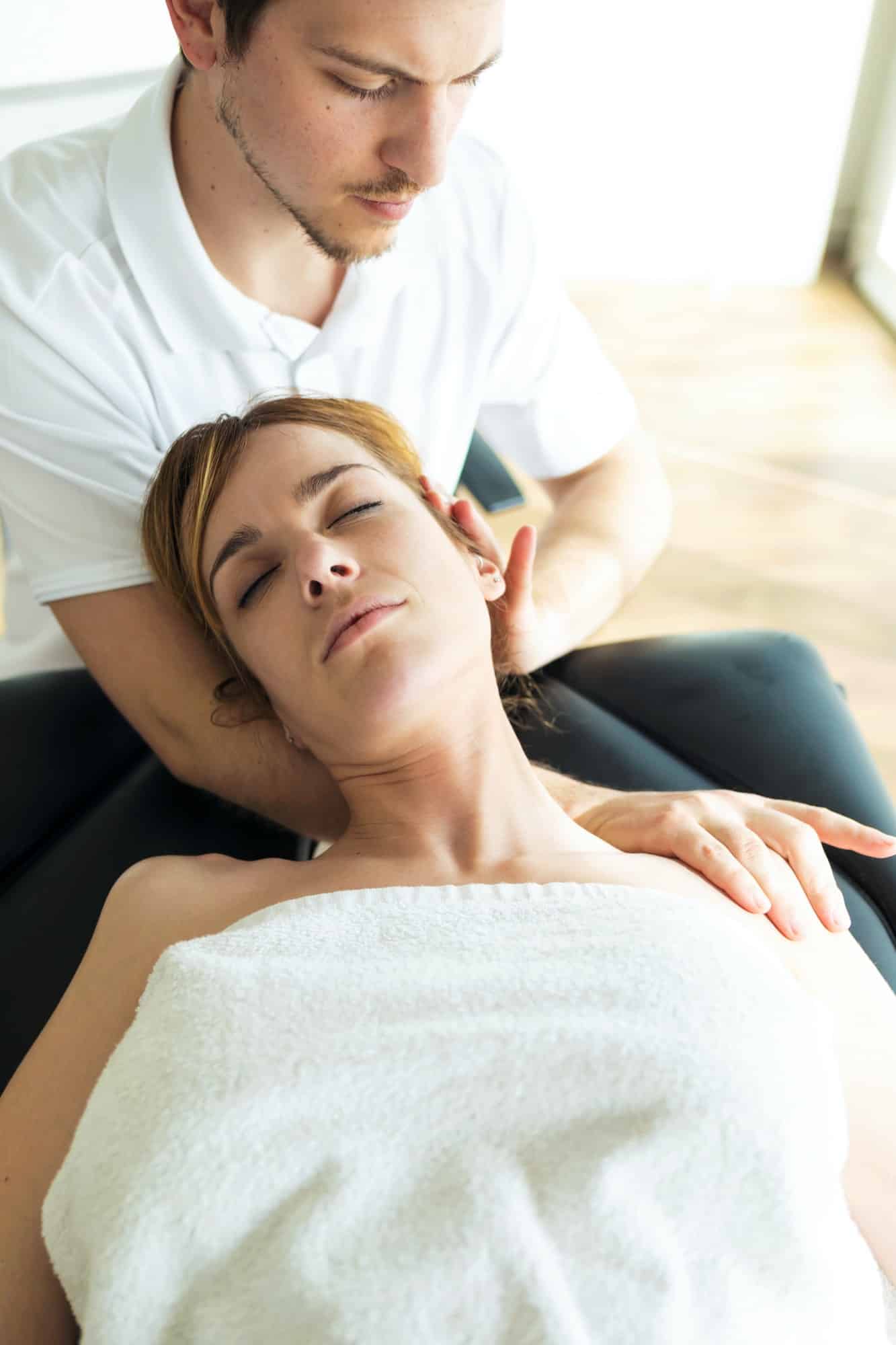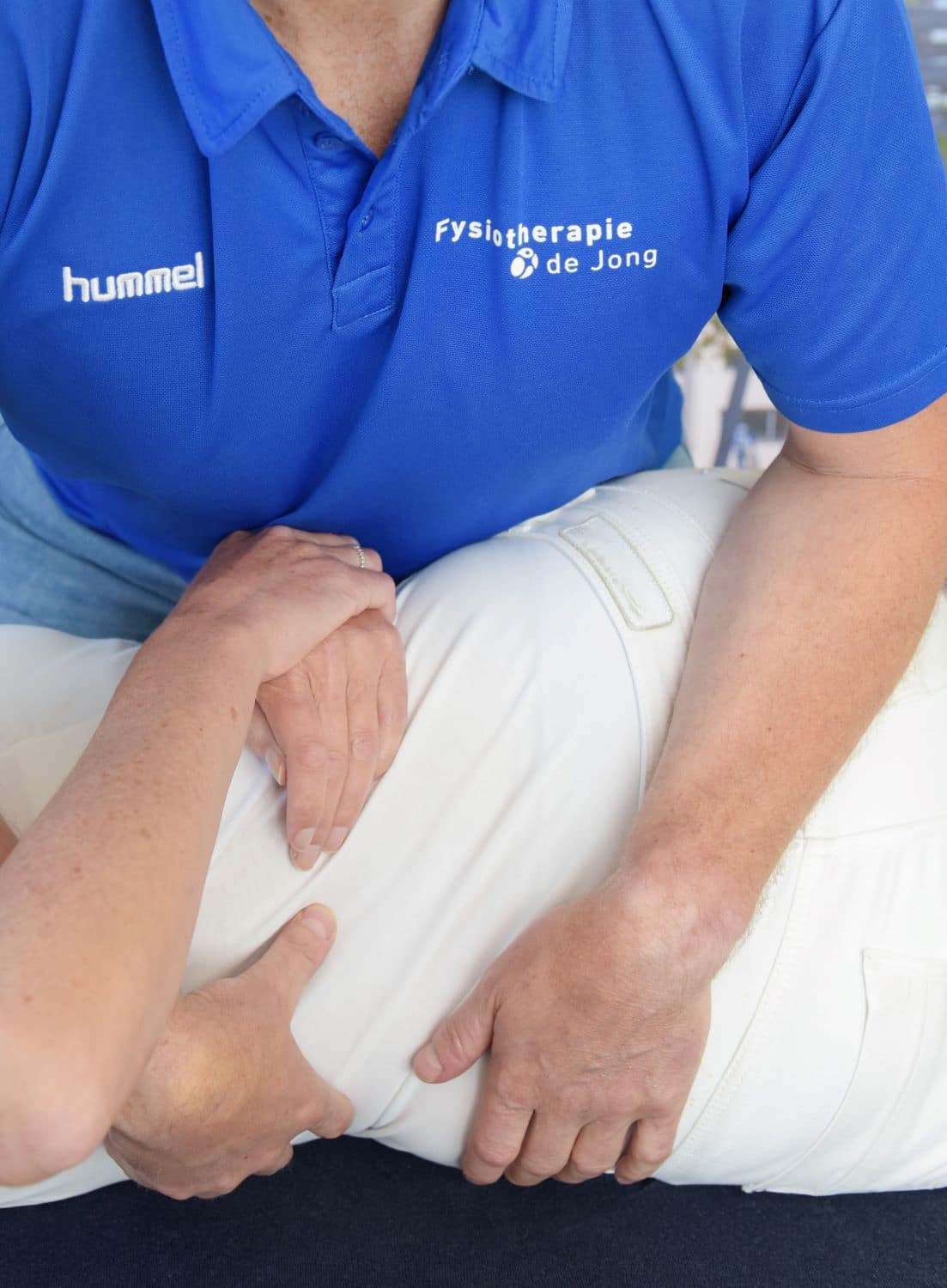
Osteoarthritis knee
Knee pain is, after neck and back pain, the most common musculoskeletal complaint. Most of these complaints are caused by knee osteoarthritis, a condition in which the quality of joint cartilage decreases and becomes thinner. In a healthy joint, articular cartilage is thick and allows the bone ends to move smoothly in relation to each other. Cartilage also has a shock-absorbing effect. With osteoarthritis, cartilage becomes damaged. It becomes rough on the surface and cracks can appear. In time, it may even disappear altogether. The underlying bone then becomes more stressed. Due to deterioration of the quality of articular cartilage, the joint becomes less taxable. This causes the joint to protest at low loads with pain, stiffness and swelling of the knee.
As we age, we all experience osteoarthritis. Only when the degree of osteoarthritis is worse than is appropriate for age may intervention be necessary. Severe wear and tear of the cartilage may eventually require replacing the knee joint with a knee replacement.
Although physical therapists cannot undo cartilage damage, research shows that exercise therapy can help reduce pain and improve knee mobility.
Furthermore, physical therapy plays a major role in rehabilitation after getting a new knee.
Meniscus complaints
A knee has two menisci: an inner and outer meniscus. These are crescent-shaped pads between the bones of the femur and tibia. These menisci absorb shock within the knee joint and disperse synovial fluid.
Part of the meniscus is well supplied with blood, which means that damages in this area can sometimes still heal. Often these tears occur as a result of a rotational injury during sports or even everyday movements. Complaints that arise from this include pain in the knee, swelling, pain when squatting and locking complaints (the feeling that something is stuck in the knee, preventing it from fully extending).
Important for diagnosing meniscus pain is the patient's story and the results of the physical examination. Additional tests, such as an MRI, could be done when necessary.
Research has shown that physical therapy for meniscus injuries is effective. Treatments focus on improving mobility and coordination of the knee and strengthening the leg muscles.


Cruciate ligament injury
A knee contains two cruciate ligaments: an anterior and posterior cruciate ligament. The anterior is more often involved in injury than the posterior. The ligament can (tear) during twisting or overstretching of the knee and in many cases occurs during sports.
Whether a torn cruciate ligament requires surgery depends on the slack in the knee and the activities the patient still wants to be able to perform (work, sports). Physical therapy and/or a brace may be sufficient as far as stabilization of the knee joint is concerned.
If surgery is necessary, physical therapy will play a major role in recovery, starting as early as the first week after surgery. The physical therapist will give you guidance in improving mobility and training strength, stability and coordination.
The posterior cruciate ligament is much less commonly affected. In many cases of posterior cruciate ligament injury, a traffic accident is the cause. Again, as with the anterior cruciate ligament, surgery for a posterior cruciate ligament is only necessary if the knee feels unstable. Rehabilitation (with or without surgery) will again be under the supervision of a physical therapist.
Injury to the knee ligaments
In addition to cruciate ligaments, the knee also has an inner and an outer ligament. The knee ligaments (medial and lateral collateral ligament) can be stretched during trauma to the knee or even tear themselves, which can also cause instability. We divide injury to the inner ligament into 3 grades. Grade 1: pain, without instability. Grade 2: moderate instability. Grade 3: severe injury and significant instability.
Injuries to these knee ligaments are less commonly repaired surgically. Often a brace is chosen, combined with physical therapy, which may be sufficient to restore stability.


Pain around the kneecap
Pain in the kneecap (patella) is also known as patellofemoral pain. These complaints often occur around adolescence and are then probably caused by the kneecap not running neatly in the groove of the upper leg or by irritation of structures around the kneecap. In some patients, no clear cause for the symptoms is found. Factors that increase the likelihood of these symptoms include being overweight, excessive sagging in foot/ankle and strenuous activities such as running and lots of jumping. In addition, people who may overstretch the knees and suffer from osteoarthritis have an increased risk of patellofemoral complaints.
Although these symptoms do not cause direct damage to the knee joint, the pain can be very annoying. Physical therapy can help reduce this pain by strengthening certain muscle groups in the leg. Stretching the leg muscles and improving coordination/balance has also been shown to be effective.
